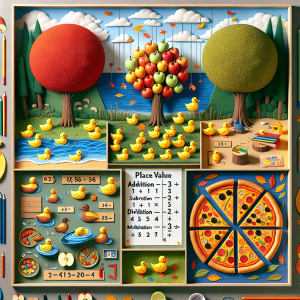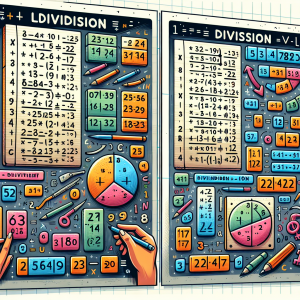Place Value
Place value is the idea that the value of a digit in a number depends on its placement or position within that number. Each place in a number represents a power of 10. The rightmost digit is in the ones place, the next digit to the left is in the tens place, followed by the hundreds place, and so on. Understanding place value helps us read and write numbers correctly and perform arithmetic operations. For example, in the number 426, the ‘4’ represents 4 tens, while the ‘2’ represents 2 hundreds. It’s essential for building a strong foundation in mathematics.
Addition
Addition is a basic mathematical operation that combines two or more numbers to find their total or sum. When you add numbers, you are bringing them together to find the whole amount. For example, adding 3 + 4 gives a sum of 7. Addition is represented by the plus sign (+) and is commutative, meaning the order of the numbers does not change the result. It is a fundamental concept in math that helps us count, solve problems, and understand how quantities can be combined to form larger quantities.
Subtraction
Subtraction is a fundamental arithmetic operation that involves finding the difference between two numbers. It represents taking away or finding out what is left after removing a part from a whole. For example, when you subtract 3 from 7, you are left with 4. Subtraction is denoted by the minus sign (-) and is the inverse operation of addition. It helps us compare quantities, determine missing values, and solve various real-life problems. Understanding subtraction is essential for everyday tasks like calculating change, measuring distances, and working with negative numbers.
Multiplication
Multiplication is a basic mathematical operation that involves combining groups of numbers to find the total or product. It represents repeated addition or scaling up a number. For instance, when you multiply 3 by 4 (3 x 4), you are essentially adding 3 four times to get 12. Multiplication is symbolized by the ‘x’ sign or an asterisk (*) and is commutative, meaning you can change the order of the numbers without changing the result. It helps in calculating areas, volumes, rates, and solving problems that involve equal groups or arrays. Understanding multiplication is key to advancing in mathematics.
Division
Division is a mathematical operation that involves sharing or grouping a number into equal parts. It is the opposite of multiplication and is used to split a quantity into smaller, equal portions. For example, when you divide 12 by 3 (12 ÷ 3), you are distributing 12 items into 3 equal groups, resulting in 4 items in each group. Division is represented by the division sign (÷) or a forward slash (/). It helps in finding how many times one number can be divided by another, determining rates, and solving problems involving distribution or allocation of resources. Understanding division is essential for everyday situations that require sharing or dividing quantities accurately.




